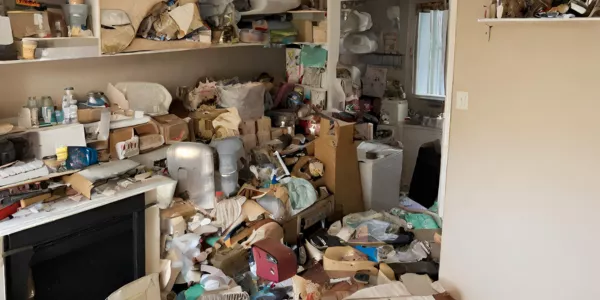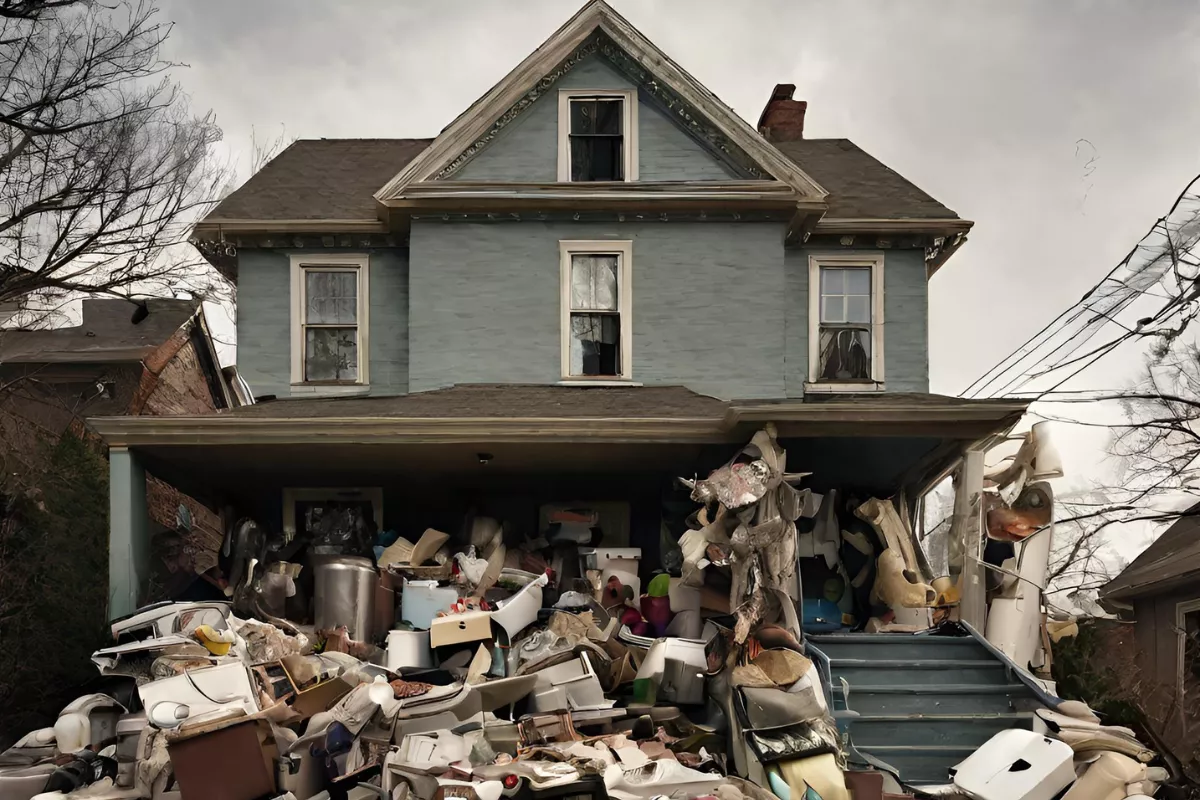Hoarder houses are more than just homes cluttered with an excessive amount of items; a significant distinction exists between collectors and individuals who hoard.
Collectors tend to maintain a manageable quantity of items, often showcasing their collections with pride due to their curated nature and potential value. In contrast, hoarding involves accumulating an excessive number of items, regardless of their value, and the inability to part with possessions due to a perceived need to save them.
Understanding hoarder houses requires a deep dive into various aspects, including the reasons behind hoarding, the potential dangers and health problems associated with hoarder houses, the different levels of hoarding, and the symptoms of hoarding disorder.
What is a Hoarder House?
A "Hoarder House" is defined as a dwelling overwhelmed by an excessive collection of items to the point where its functionality is severely impaired.
The accumulation of items, ranging from everyday objects like newspapers, clothes, and books to more unusual items based on the individual's hoarding tendencies, leads to clutter that compromises the use of living spaces, bathrooms, and kitchens for their intended purposes.
This clutter, often consisting of disorderly personal belongings with little to no value, typically restricts movement within the home to just narrow pathways through various rooms, significantly affecting the quality of living and safety of its inhabitants.
Why Do People Have Hoarder Houses?
Hoarding behaviors are often observed in individuals who experience profound social isolation, notably among the elderly who may live alone, be in separated marriages, or are widowed, and lack meaningful connections with peers, family, or the wider community.
This isolation can be a significant factor leading to hoarder houses. Additionally, hoarding is deeply intertwined with psychological issues, possibly originating from traumatic experiences, anxiety, depression, or other mental health disorders.
For many, the accumulation of items serves as a form of emotional comfort, with possessions acting as symbolic safety nets against loss or as essential elements of their identity and memories, further contributing to the complexity of hoarding behaviors.
What Happens to a Hoarder's House?

Over time, a hoarder's house can deteriorate significantly. The excessive clutter can lead to structural damage, increased fire risk, and infestations of pests. Additionally, the hoarder may become socially isolated, as the condition of their home makes it difficult to entertain guests or maintain relationships.
When a hoarder dies, the handling of their estate and the cluttered property depends on whether they left a will. If a will is present, the hoarder's assets, including any real estate, are transferred to the named beneficiaries, who then bear the responsibility of clearing out the space, be it a rented apartment or an owned home.
However, in the absence of a will, a situation referred to as dying intestate, the state takes on the responsibility to settle the estate. This involves identifying potential heirs or, if none are found, liquidating the assets to pay off any debts, with leftovers going to the state's treasury.
In scenarios where the hoarder's property is left without claimants and is significantly cluttered, local authorities may hire professional cleaning services to tackle the situation, often leading to the disposal of most belongings due to associated health risks like pest infestations or contamination.
Do Hoarder Houses Create Dangerous Living Conditions?
Hoarder houses present various risks to both the inhabitants and the surrounding community. The clutter, often consisting of flammable materials, not only poses a fire hazard within the house by impeding exits and increasing the likelihood of rapid flame spread but also endangers neighboring properties if such materials are kept outside.
In addition to fire risks, the accumulation of clutter can create unsanitary conditions that attract pests like rodents and insects, and promote mold growth. These conditions compromise the health and safety of residents and can have a detrimental impact on nearby homes as well.
Do Hoarded Houses Create Health Problems?
Residing in a cluttered hoarder home can lead to various health complications, such as respiratory issues, infections, and physical injuries due to tripping or falling. The accumulation of decaying food and waste deteriorates air quality and fosters the proliferation of harmful bacteria and mold.
These health risks are exacerbated in environments where individuals hoard animals, food, or trash, exposing themselves and others to toxic substances like animal feces, spoiling food, and dangerous chemicals, which collectively contribute to poor sanitation and the spread of disease.
What Are the Symptoms of a Hoarding Disorder?
Symptoms of hoarding disorder, such as an ongoing struggle to discard items, significant anxiety during attempts to declutter, and distress at the idea of parting with possessions, often start to appear in early life stages. Individuals may feel overwhelmed by their accumulated items yet find comfort in their presence.
These early indications can evolve into a more pronounced hoarding behavior, leading to the obstruction of living spaces with indiscriminately accumulated items, often without any immediate necessity or available space for them. This pattern typically begins in adolescence or early adulthood and can escalate by middle age, making the disorder more challenging to manage.
The condition tends to progress quietly and privately, resulting in substantial clutter that often goes unnoticed by others until it becomes severe.
Who buys hoarder houses?
Hoarder homes typically draw attention from a distinct group of buyers, mainly consisting of real estate investors and contractors who see value in acquiring these low-cost properties to refurbish and flip for a gain.
Entities like "We Buy Ugly Houses" frequently pursue these distressed properties, presenting quick, cash transactions. When a hoarder house is not viable for cleanup, it is often put on the market "as is," appealing primarily to these cash buyers who look past the current state to the home's potential post-renovation.
However, this sales approach usually results in lower profits for sellers since the homes are sold below market value due to their condition. Non-investor buyers interested in these homes might need to explore rehab loans, such as an FHA 203k, to fund the necessary extensive renovations.
People also ask
Can hoarding be cured?
Hoarding disorder is a challenging condition to treat, but with therapy, particularly cognitive-behavioral therapy (CBT), individuals can learn to manage their impulses and gradually declutter their homes.
Is hoarding considered a mental illness?
Yes, hoarding is recognized as a distinct disorder within the DSM-5 (Diagnostic and Statistical Manual of Mental Disorders), characterized by persistent difficulty discarding possessions regardless of their actual value.
How can someone help a hoarder?
Helping a hoarder requires patience and understanding. It's important to encourage them to seek professional help and to offer support throughout the process, rather than forcing them to declutter, which can exacerbate their anxiety.

 Marcio Vasconcelos
Marcio Vasconcelos





